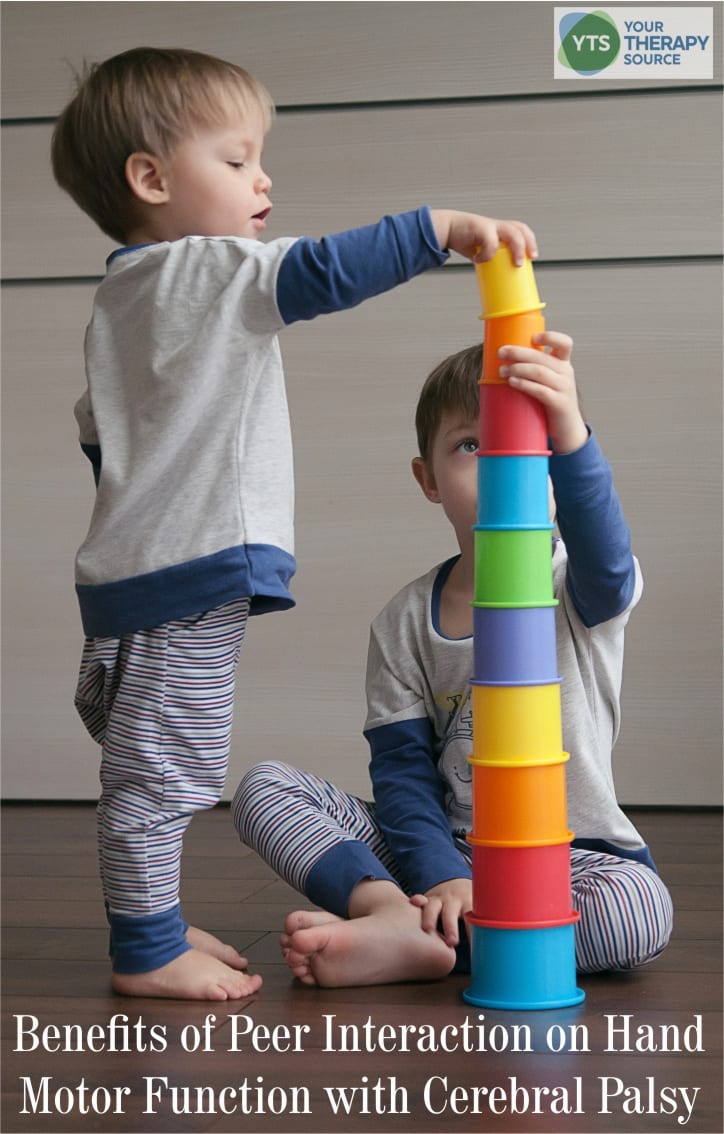Hand Motor Function in Unilateral Cerebral Palsy – Benefits of Peer Interaction

Therapeutic activities for children with unilateral cerebral palsy are often suggested to help improve hand motor function in children with unilateral cerebral palsy. A recent study indicated that there are benefits to child-to-child interaction when it comes to hand motor function in children with unilateral cerebral palsy.
What did the study investigate?
This study was published in Developmental Medicine & Child Neurology. The researchers evaluated the feasibility and effectiveness of a home-based, action observation treatment (AOT) that encouraged child-to-child interaction to improve hand motor function in 20 children (average age 6 years, 7 months) with unilateral cerebral palsy.
The children participated in 20 sessions where they observed and imitated a wizard performing magic tricks that involved dexterity followed by a child-to-child live video session to practice the same exercise.
Data was collected one month before, at baseline and at the end of treatment on hand motor skills, spasticity, muscle strength, visual analogue scale, and global impression of change.
What did the results say on hand motor function?
After data analysis, the researchers reported the following:
- improvements in global hand-motor and bimanual skills from the time between baseline and the end of treatment.
- significant correlation between motor improvement and difference in hand motor skills relative to the peer.
It was concluded that action observation treatment associated with child-to-child interaction effectively improved hand motor function in unilateral cerebral palsy. Interaction with a more capable peer increased the chances of a positive outcome in hand motor function.
Resource for Bimanual Skills for Children with Unilateral Cerebral Palsy
Are you a therapist, teacher, or parent in search of creative, easy to set up, therapeutic activities for children with unilateral cerebral palsy? Therapeutic PLAY Activities for Children includes 100 play activity pages and 12 tip sheets to encourage the development of fine motor skills, bimanual skills, rolling, crawling, tall kneeling, standing balance and cruising. FIND OUT MORE.
Reference:
Nuara, A., Avanzini, P., Rizzolatti, G., & Fabbri‐Destro, M. (2019). Efficacy of a home‐based platform for child‐to‐child interaction on hand motor function in unilateral cerebral palsy. Developmental Medicine & Child Neurology.
Read more on this topic
BENEFITS OF STRUCTURED BIMANUAL SKILL PRACTICE
BIMANUAL DAILY ACTIVITIES – INTERESTS INFLUENCE OUTCOME IN CHILDREN
CIMT, BIMANUAL THERAPY AND OT HOME PROGRAMS



